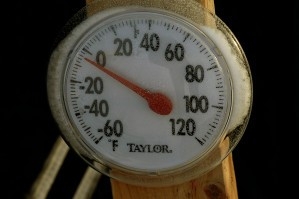THE OFF-SEASON WORKOUT

The winter is the off-season for many athletes but that doesn”t mean they should stop training and prepping for the upcoming season (side note – an athlete is anyone participating in a competitive event, even if it’s recreational). Dry land training is appropriate at any age and the basic components of a workout are the same while exercises, weights, and durations vary. This past summer, I was fortunate enough to spend a few weeks as staff member at USA Hockey’s National Development Camps in Minnesota, where I learned a lot from the National Team strength & conditioning coaches about developing a training program and the importance of a proper post-workout recovery. Below are the basic components to a well-rounded dry land workout, as well as a few tips for injury reduction and proper recovery.
- Strength – Strength is the ability to resist a force. For youth athletes or athletes just starting to train, body weight will provide enough resistance to begin building strength, whereas older or more experienced athletes may need to begin adding weight to develop strength. Strength exercises should focus on your lower body, upper body, and core muscles (abdominals, obliques, & back). Examples are squats, lunges, bridges, push-ups, pull-ups, and sit-ups.
- Speed/Agility – Speed is the rate at which you travel, while agility is being able to quickly change directions. Training should not only include building speed in a forward direction, but also in lateral and backwards directions. Speed/Agility exercises include sprints, side shuffles, and backpedaling, which can all be performed using a cone pattern or agility ladder.
- Explosive Power – Explosive power is the ability to move a large force quickly. In most cases, this force is your body. Explosive power exercises involve jumping, hopping, or throwing. Examples include tuck jumps, burpees, box jumps, lateral hops, and medicine ball toss.
- Endurance/Conditioning – Endurance is the ability to perform a task for a long period of time. All sports require endurance, although in different forms. For athletes that participate in the typical “endurance” sports, long runs, bike rides, or swims are more appropriate, whereas athletes that participate in “speed” sports will benefit more from interval training to build endurance.
- Flexibility – Flexibility is the ability to bend and is the most overlooked component to a training program. It is very important for your muscles to have good flexibility so that you do not strain or tear them during competition or training. Every workout should end with stretching for the lower body, upper body, and trunk muscles.
- Recovery – Once your workout is finished, your job is not done! The recovery phase is very important because you must replace water and electrolytes that you lost, as well as provide nutrients for your muscles to rebuild and maintain their strength. Make sure that you drink and eat soon after working out to maintain the gains you just made!
While this is intended as a guide for those of you who want to build your own workout, if you feel that you need more guidance or want a more intense training program, please feel free to check out our friends at Synergy Fitness in Williston, Vermont.


